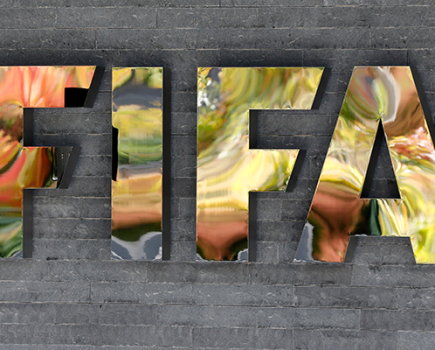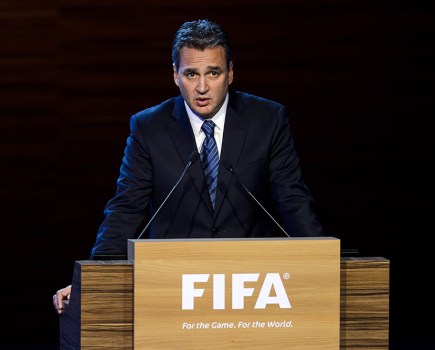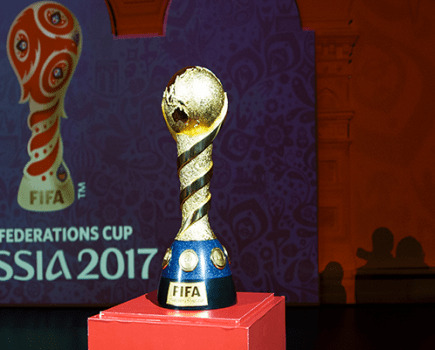 All Michel Platini’s worst fears have been confirmed.
All Michel Platini’s worst fears have been confirmed.
Within minutes of the English Premier League voting to bring goal-line technology into the club world so the boss of Spain’s La Liga looked forward to the day when the electronic eye could cast an eye on offside decisions.
Events have conspired over the past 10 days to make the French president of European federation UEFA appear a most unreconstructed Luddite.
First the executive committee of FIFA – of which he is a vice-president – voted to intall GLT (GoalControl version) at the Confederations Cup in Brazil in June.
Then, on Tuesday, his preferred additional assistant referees system let down Malaga badly in the last seconds of their Champions League quarter-final return against Borussia Dortmund.
Next the Premier League awarded its breakthrough GLT contract to Hawk-Eye and, within minutes, the director-general of La Liga said he wanted even more technological assistance for referees (with luckless Malaga doubtless in mind).
As Platini told me last summer: “It’s not that I am against goal-line technology as such. I am against all technology. If we say Yes to goal-line technology then it will NOT stop there. Someone will immediately want something more.”
Hawk-Eye’s camera-based system will be installed in all Premier League stadia over the summer at a cost of £250,000 per ground. It will also make its debut under the auspices of the Football Association at Wembley for the Community Shield curtain-raiser in early August.
Earlier this week FA general secretary Alex Horne said: “I always thought it was an ideal piece of technology to allow into the game . . . There are occasions when GLT is needed and we’ve seen them here at Wembley, we’ve seen them in World Cups, we’ve seen them 11 or 12 times in the Premier League this season alone.
“So technology that says ‘yes, the ball has crossed the line’ and lets the referee know makes an awful lot of sense to me – particularly where it’s a knock-out situation, incorrect decisions have less opportunity to even themselves out over a season.”
La Liga’s Roca was all in favour, too.
Appearing at the Soccerex European Forum in Manchester, he said: “Goal-line technology is something everybody should have. But we’re also looking into offside technology. We’ve seen over the past few weeks the problems. I think the technology is there and we can come up with solutions to help the referee make these calls.
“We completely agree with the technological revolution to help the game and also to help the referees.”
Hawk-Eye, an English company which was sold to Sony two years ago, was preferred over GoalControl.
It has long provided its camera-based service to tennis and cricket competitions and has been a leader in the promotion of goal-line technology since before the law-making International Board had put GLT testing on ice after a flawed trial at the 2007 World Youth Cup in Colombia.
Everything changed after FIFA president Sepp Blatter then felt the full weight of international ridicule following Frank Lampard’s phantom goal in England’s defeat by Germany in Bloemfontein in the 2010 World Cup finals.
The Chelsea man’s shot in England’s second round tie hit the underside of the bar, ricocheted down behind the line then bounced out. The Uruguayan referee waved play on and England lost 4-1. Blatter, until then an opponent of technology on the grounds that it infringed the ‘universality’ of the game, flip-flopped overnight.
Applicants were invited to test again and, on a historic July 5 last year, Hawkeye and GoalRef were approved for use by the International Board law-makers after stringent testing including the essential demand that the referee must receive a confirmatory signal within one second of the ball crossing the line.
Two weeks earlier Blatter’s desire to see GLT approved had been underlined by his insistence that it was a “necessity” after the Ukraine-England incident at Euro 2012. Marko Devic had been denied an equaliser after John Terry hooked the ball out from beyond the goal-line. Hungarian assistant Istvan Vad – employed as a goal-line assistant under the rival and experimental five-officials system – could not have been better placed.
No matter that Ukraine should have been pulled up for offside earlier in the move: Blatter had been handed the final bullet to shoot down any remaining opponents of GLT (including Platini).
Thus both Hawk-Eye and GoalRef were used during the Club World Cup in Japan but neither was needed to resolve an ‘over-the-line’ issue.
Independent testers assured FIFA that both systems functioned as effectively as could be ascertained and a tender was opened to fulfil Blatter’s promise that GLT would be installed in Brazil for both this June’s Confederations Cup and next year’s World Cup.
FIFA will not use the goal-line assistants system pioneered in European international competition by UEFA and taken up in top-division competition in Italy and Brazil.
The reason has nothing to do with any possible rivalry between Blatter and Platini (think FIFA presidential election in 2015) but because match officials at the Confederations Cup and World Cup are drawn from all around the world and few of the non-Europeans have significant experience of the system.






